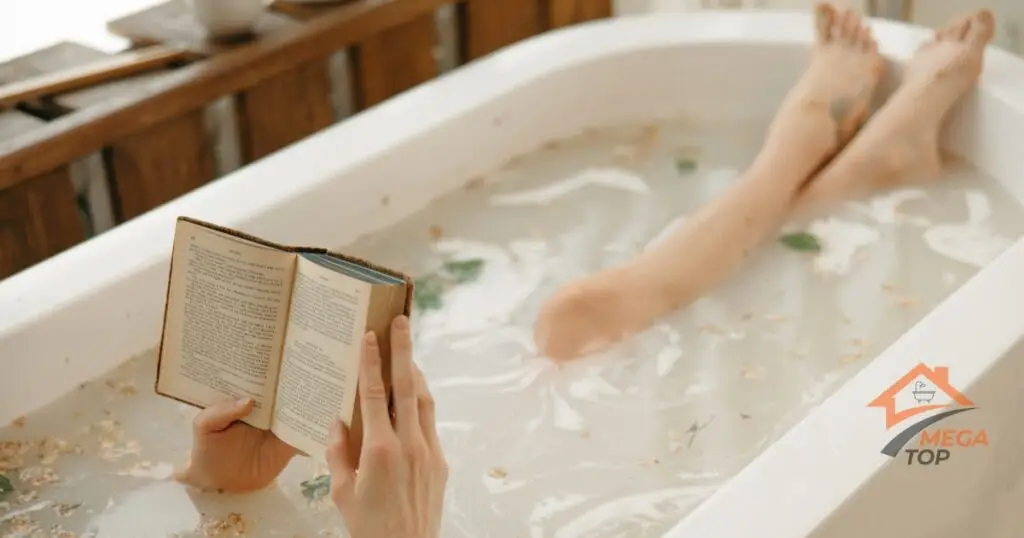Why Update Your Bathtub Without Replacing It?
Replacing a bathtub is often a costly and labor-intensive process, especially if you factor in plumbing changes, tile work, and disposal of the old tub. Fortunately, there are several ways to update and refresh your existing bathtub without the need for a full replacement. Using bathtub paint, reglazing, or resurfacing, you can give your bathroom a new look while saving both time and money.
1. Bathtub Painting: A Cost-Effective Solution
What is Bathtub Paint?
Bathtub paint, typically epoxy or acrylic-based, is a specialized product designed to restore and refresh the surface of your bathtub. These paints are formulated to adhere to materials like porcelain, fiberglass, and acrylic, providing a durable, water-resistant finish. Bathtub paint not only updates the look of your tub but also helps cover chips, stains, and discoloration that accumulate over time.
Benefits of Using Bathtub Paint
- Cost-effective: Bathtub paint is significantly cheaper than replacing the tub.
- Quick update: Painting takes less time than installing a new tub.
- Customizable finishes: You can choose different colors and finishes to match your bathroom's aesthetic.
DIY Bathtub Painting vs. Professional Services
Steps to Paint a Bathtub Yourself
Painting a bathtub yourself can be a satisfying DIY project if done carefully. Here’s a brief overview of the process:
- Prep the surface: Clean the tub thoroughly and remove any caulk or silicone around the edges.
- Sand the surface: Lightly sand the tub to ensure the paint adheres properly.
- Apply primer: A high-quality primer should be applied to promote paint adhesion.
- Paint the tub: Use a paint sprayer or a roller to apply the bathtub paint in thin, even coats.
- Seal the finish: A clear sealant helps protect the painted surface from moisture and wear.
When to Hire a Professional for Bathtub Painting
While DIY bathtub painting can be an option, hiring a professional guarantees a smoother, more durable finish. Professionals use high-quality paints and advanced techniques, ensuring a longer-lasting result. A professional service can typically complete the job in a day or two, compared to the DIY process, which may take several days for proper preparation and drying time.
2. Bathtub Reglazing
What is Reglazing?
Bathtub reglazing, also known as refinishing, involves applying a new, high-gloss finish over the existing surface of your tub. This process can restore the tub to its original look or give it a brand-new color. Reglazing is a great option for older bathtubs with minor surface damage, such as chips or stains.
Reglazing vs. Replacing: Cost Comparison
Reglazing a bathtub usually costs between $300 and $600, a fraction of the cost of replacement, which can run $1,500 to $3,000 or more. This method allows homeowners to extend the life of their existing tub without the hassle of a full remodel.
DIY Reglazing Kits vs. Professional Reglazing
DIY reglazing kits are available for those looking to tackle the project themselves, but these often don’t offer the same quality or longevity as a professional service. Professional reglazing technicians use industrial-grade products and have the expertise to ensure a flawless finish that lasts for years.
3. Bathtub Resurfacing
Difference Between Reglazing and Resurfacing
While reglazing focuses on restoring the surface’s shine, resurfacing involves repairing and renewing the tub’s entire surface. Resurfacing can involve filling in cracks, smoothing out the surface, and applying new coatings to strengthen and refresh the tub. This process is ideal for bathtubs with more extensive wear and tear.
Is Resurfacing Right for Your Bathtub?
Resurfacing is an excellent option if your tub has surface-level damage but is otherwise structurally sound. The process can address more serious issues, such as chips, cracks, or pitting, offering a fresh, smooth surface without the need for a complete replacement.
4. Using a Bathtub Liner
What is a Bathtub Liner?
A bathtub liner is a custom-made shell that fits over your existing tub. These liners are usually made from acrylic or PVC and are designed to cover old, worn-out tubs while providing a new, polished appearance.
Bathtub Liners: Costs and Longevity
Installing a bathtub liner costs between $800 and $1,500, depending on the material and installation fees. This method is a quick way to refresh the look of your bathtub without the hassle of demolition. However, liners may not be ideal for tubs with significant underlying damage, and water can sometimes seep between the liner and the tub if not installed properly.
5. Refinishing with Tub and Tile Kits
Affordable DIY Refinishing Kits
For homeowners looking for a budget-friendly option, tub and tile refinishing kits are available. These kits typically include paint, rollers, and instructions for refinishing the surface of your tub and surrounding tile. They are ideal for minor cosmetic updates and can be used to repair chips, stains, and discoloration.
Refinishing Kits: Pros and Cons
- Pros: Affordable, easy to use, and provides a quick update.
- Cons: Results may not last as long as professional services, and achieving an even finish can be challenging for beginners.
6. Other Quick Tub Updates (Non-Paint Options)
In addition to using bathtub paint or refinishing methods, there are other simple ways to update your bathtub without a full replacement:
- Changing hardware: Replacing old faucets, showerheads, or drains can give your bathtub a modern touch.
- Regrouting or replacing caulk: Fresh caulk and grout around the edges of your tub can make a huge difference in the overall look.
- Adding accessories: Install new grab bars, soap dishes, or tub caddies to enhance the functionality and appearance of your tub.
DIY vs. Professional Bathtub Update Services
While DIY options like bathtub painting or refinishing kits can save you money, they often come with risks. Inconsistent finishes, improper paint adhesion, and short-lived results are common issues with DIY projects. Hiring a professional ensures that the job is done correctly and that the finish will last for years to come.
Examples of Successful Professional Bathtub Updates
- Refinishing with a smooth, glossy finish: Professional refinishing services can restore the bathtub’s surface to a like-new condition, giving it a high-gloss, durable finish that lasts for a decade or more.
- Seamless liner installation: When installed by a professional, bathtub liners fit perfectly over the existing tub, creating a watertight seal and extending the life of your bathroom.
With so many ways to update your bathtub without replacing it, you can achieve a fresh look without the cost and effort of a full remodel. Ready to refresh your bathtub? Contact a professional today to explore your options and get expert advice on the best solution for your bathroom!
FAQ
With proper care, bathtub paint can last 5-10 years depending on use and maintenance.
Yes, but it requires thorough preparation and specific paint types. Professional services provide a more durable and even finish.
Reglazing involves applying a new glaze to the tub, while painting uses specialized epoxy or acrylic paint for a refreshed look.
Resurfacing is a cost-effective way to extend the life of your tub, but replacement may be needed if there are structural issues.
Professional bathtub painting typically costs between $300 to $600, depending on the tub’s condition and location.





